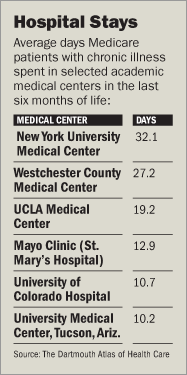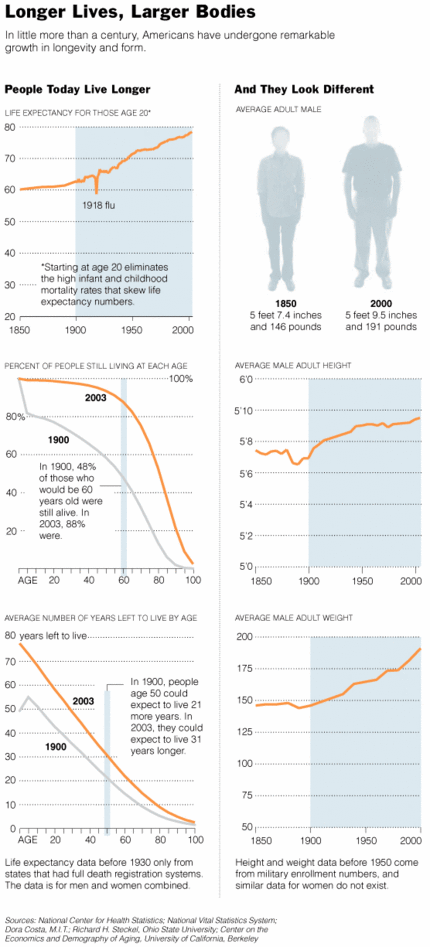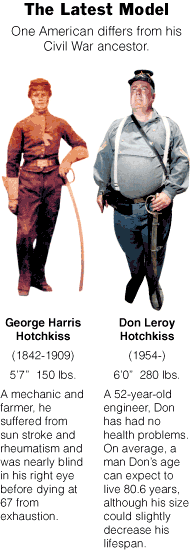 Source of graphic: online version of the WSJ article cited below.
Source of graphic: online version of the WSJ article cited below.
(p. D1) The Dartmouth investigators say there is no evidence that higher amounts and greater intensity of care lead to better outcomes for patients. They note past studies done at Dartmouth — looking at Medicare patients with heart attacks, hip fractures and colon cancer — that suggest centers with the most high-intensity care actually have slightly higher death rates than those with a lower intensity of care. As a result, the researchers say, the bills for patients with similar illness may be two or three times higher at some prestigious institutions, with no apparent additional benefit — and perhaps some risk of harm.
. . .
(p. D4) John E. Wennberg, principal investigator for the Atlas project, has pioneered research into variation of medical services. He says the differences among academic medical centers are particularly striking since the medical community depends on these institutions to develop effective treatment strategies. "If the academic medical centers don’t know how to do it, nobody will," Dr. Wennberg says.
He says his research suggests the primary reason for the differences is the capacity of services, such as hospital beds, intensive care units and specialist physicians, within communities. There isn’t any evidence that people are sicker in the markets of high-intensity services than in low ones, says Dr. Wennberg, but when beds are available, physicians figure out a way to fill them.
For the full story, see:
 Source of graphic: online version of the WSJ article cited above.
Source of graphic: online version of the WSJ article cited above.

 The Johnson twins who were displayed, and whose lives were saved, by Dr. Couney. Source of photo: online version of NYT article cited above.
The Johnson twins who were displayed, and whose lives were saved, by Dr. Couney. Source of photo: online version of NYT article cited above.


 Source of graphic: online version of the NYT article cited above. Source of book image:
Source of graphic: online version of the NYT article cited above. Source of book image: 
 Bjorn Lomborg. Source of image:
Bjorn Lomborg. Source of image: 
 Source of the graphic: the online version of the NYT article cited below.
Source of the graphic: the online version of the NYT article cited below.  "William Kelly, 43, extracted part of his own tooth, leaving a black stump. He plans to pull one more." Source of caption and image:
"William Kelly, 43, extracted part of his own tooth, leaving a black stump. He plans to pull one more." Source of caption and image: